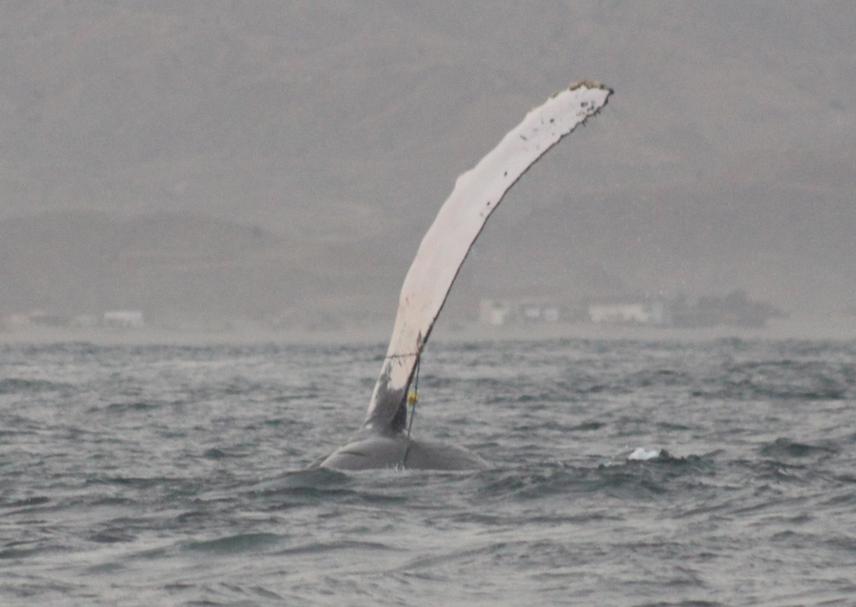Ana María García Cegarra
Other projects
16 Feb 2015
From Whales to Humans: An Integrated Evaluation of the Conservation Role of Whale Watching Industry in the Northern Coast of Peru
4 Aug 2020
Whale-Watching in Northern Peru: Promoting Best Practices and Assessing Effects on Nursing Behaviour
Whale-watching in Peru benefits with US$3 million annually since 2009 focusing in the observation of humpback whales during their breeding season. Here whale-watching is performed beyond legal limitations and this may cause harassment and stress to the whales observed. Whales perceive the presence of the whale-watching vessels as a threat and they try to avoid the vessel reacting in both short and long term. My previous studies showed that in the short-term, whales avoid whale-watching vessels by performing deeper dives, decreasing breathing frequency and changing their navigation path. However, there are not studies analysing the long term consequences of whale-watching in the behaviour of humpback whales in Peru.

An adult humpback whale with a fishing rope entangled in its pectoral fin. © PIero Uceda.
Moreover, entanglement in fishing gears is the main anthropogenic threat for humpback whales stock in the South East Pacific ocean. Entanglement cause distress to humpback whales, as rope entanglement deprives them of swimming, foraging, mating, and finally the death of the animal. During my previous research in Peru I noticed and increase in the number of entangled humpback whales during breeding and nursing season. However, no studies have evaluated the stress responses caused during the entanglement in humpback whales and since 2016, no disentangled workshops have been performed to the local community in order to increase the success in humpback whales disentanglement. To better understand the response of humpback whales to whale-watching and entanglement it is necessary to determine physiological indicators related to distress behavior and how they affect individuals and population health.
Chronic stress affects the welfare and health of wildlife, and glucocorticoid levels can be used as biomarkers of this situation. Glucocorticoids, as cortisol and corticosterone, are steroid hormones produced in the adrenal cortex and they are released into to blood in response to stressors. Cortisol levels in blubber of whales increase due to stressors such noise pollution and vessel traffic. However, no studies have been performed in order to evaluate whether whale-watching and entanglement is inducing such stress responses in the breeding area of humpback whales in Peru. The objectives of this study are:
1) To determine whether differences in blubber glucocorticoid levels could be detected between entangled and non-entangled humpback whales and adult humpback whales with and without the presence of whale-watching vessels.
2) To perform whale-watching best practices and how to disentangled whales workshops to tour operators in Los Organos and El Ñuro villages.
Header: A mother and calf humpback whales being harassed by a whale-watching boat in their nursing ground of Los Organos, Peru.